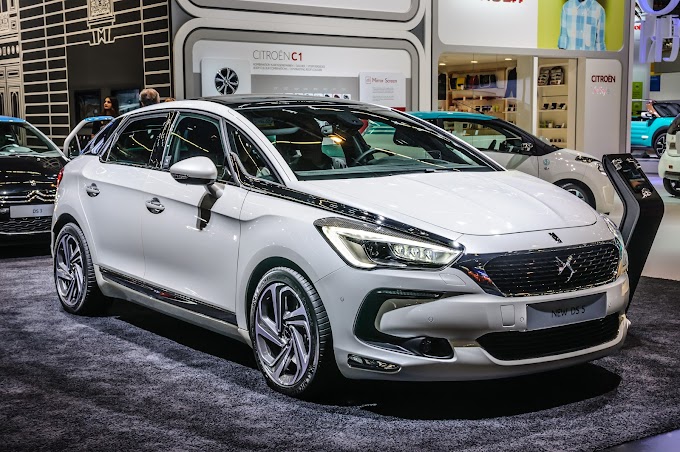Defensive Driving Techniques: Anticipate, React, Survive
Think of defensive driving as not just a skill but a 24-hour guardian angel, keeping a watchful eye on other vehicles and potential hazards. It's not about being the fastest on the road, but the smartest. And in this article, we won't just tell you to keep your eyes peeled; we'll show you how to predict the unpredictable and dance elegantly through the dangers of aggressive driving. By the end, you'll know how to anticipate, react, and survive any curveballs the road throws at you.
Understanding Defensive Driving
Defensive driving is not just a skill, it's akin to a superpower on wheels that transforms ordinary drivers into road-savvy guardians. It's all about harnessing the principles of anticipation, concentration, and correction to navigate the asphalt jungle. Embracing these techniques doesn't just mean you're less likely to be caught off guard by other road users; it also translates to tangible benefits such as reduced insurance premiums and improved vehicle dynamics.
By adopting a defensive approach, you're committing to a proactive stance against potential dangers. Whether it's the erratic dance of aggressive drivers or the sneaky ambush of blind spots, a defensive driver is always a step ahead. This proactive hazard perception is not just about avoiding a fender bender; it can be life-saving, ensuring that at the end of the day, you and your loved ones return home safe and sound.
Ultimately, defensive driving is an investment in peace of mind a wise one, considering that the road is an ever-changing tapestry of situations and events. It's a blend of training, mindfulness, and the right attitude, all of which combine to create an invisible shield around you, your passengers, and your vehicle.
Mastering the Art of Anticipation
Playing the role of a psychic might be a stretch for most of us, but when you're behind the wheel, this skill becomes less about reading palms and more about reading the road. Anticipating other drivers' actions is akin to having a sixth sense in driving. It's about envisioning the possible "what ifs" that could unfold before you as you navigate through a world of unpredictable human beings in fast-moving metal boxes.
- Keep a keen eye on the behavior of pedestrians they're often the wild cards of urban thoroughfares.
- Train your sights further down the road, not just on the bumper ahead. This way, you can anticipate issues and react with ample time.
- Watch for cues of potential turns or lane changes from others, even if a turn signal seems to be a foreign concept to them. Your proactive glance could save you from a close encounter.
Anticipation in driving isn't just about avoiding the grand finale of metal crunching; it's about ensuring every journey you embark upon isn't your own action-thriller movie. By honing this crucial skill, you're not just dodging accidents, you're safeguarding the narrative of your day-to-day life.
Effective Use of Communication
Imagine the roadway as a bustling bee-hive, where every move and buzz is a signal communicating intent. In the realm of defensive driving, effective communication isn't just about pleasantries; it's a pivotal piece in the puzzle of driver safety. One of the most understated yet vital elements of this art is the proper use of turn signals. Like a lighthouse guiding ships, your indicators inform fellow travelers of your next move, allowing them to react accordingly and maintain the harmony of traffic flow.
- Always signal well in advance before changing lanes or making turns.
- When approaching intersections or busy cross streets, ensure your intentions are clear.
- Remember that turn signals are not just courtesies but essential tools for preventing collisions.
Driving is a dance, and with proper communication, we all learn the steps. By signaling your intentions, you're not just being polite; you're actively preventing dangerous situations and ensuring the safety of all people on the road.
Maintaining a Safety Cushion
Imagine cruising down the highway, and suddenly, the car in front brakes unexpectedly heart-stopping, right? This is where the life-saving ballet of maintaining a safety cushion comes into play. It's the invisible buffer zone you keep between your car and the one ahead, providing you with precious seconds to react and avoid a bumper kiss. Here's how to ensure you've got enough cushioning:
- Follow the 3-Second Rule: On a bright sunny day, pick a fixed point that the car in front of you passes a sign, a tree, or a building. Make sure it takes you at least three seconds to reach the same point. This gap should expand with increased speed or poor weather conditions.
- Scan Intersections Even on Green: Just like a cat watches a laser dot always be alert. Don't assume the coast is clear just because you have the green light.
- Adjust for Weather: When Mother Nature throws a tantrum, be it snow, fog, or torrential rains, increase your safety cushion. Slippery roads mean your car's ballet shoes are a bit too slippery, requiring more space to stop without a pirouette.
By keeping this protective bubble, you're not just a driver; you're a road guardian angel, safeguarding not just your life, but the lives of your fellow travelers. Remember, space is the greatest gift you can give yourself on the road it's a cushion that comforts in times of traffic surprises and turns potential collisions into near misses.
Controlling Speed and Space
Imagine the road as a wild river, and your car, a kayak; the importance of controlling speed and space then, becomes as clear as day. Thrashing through the rapids with reckless abandon is a recipe for a capsized day! In the realm of safe driving, maintaining proper speed control is akin to mastering the paddle it's not just about avoiding speeding tickets, but about ensuring the safe passage of every person in your vessel and on the road.
- Mind the Gauges: Keep a vigilant eye on your speedometer. Adhering to speed limits is not just obeying traffic laws, it is a covenant with the safety of your fellow travelers.
- Space is Grace: Allow yourself the luxury of space. Like the personal bubble we relish in crowded elevators, on the road, this safety cushion could be the difference between a near-miss and a pile-up.
- Dance with Distance: Adjust your following distance based on your speed, road conditions, and visibility. A generous spacing allows you time to react, much like a cat on its toes ready to pounce away from potential problems.
Remember, the throttle under your foot is a powerful tool, but it is the care and attention with which you wield this power that crowns you a maestro on the multilane roads of life.
Handling Hazardous Conditions
When Mother Nature throws a curveball, defensive drivers need to adapt to the pitch. Hazardous conditions such as adverse weather conditions can transform a routine drive into a nail-biting quest for safety. Whether it's a deluge that's reduced visibility to a whisper or a snowstorm that's turning roads into luge tracks, your driving skills are put to the supreme test. Here’s how to be the master of your domain, no matter what the skies unleash:
- Weather Navigation: Be the captain of your ship by keeping a keen eye on weather reports. Anticipating storms gives you a tactical advantage and allows you to adjust your journey or timing.
- Speed Management: Slow and steady might not win the race, but it certainly ups the chances of you singing 'I Will Survive' after your commute. Adjust your speed to the conditions, even if it means going below the posted limit.
- Proactive Driving: It's not just about reacting; it's about proactive steps. Increase your following distance to account for slippery roads and the extra time needed for sudden stops.
- Visibility Vigilance: Keep your mirrors and windscreen clear. Your field of view is your crystal ball in hazardous conditions - make sure it's as unobscured as possible.
In essence, when the weather outside is frightful, your driving should be delightful. Well, maybe not delightful, but at least safe and controlled. By following these tips, you’ll navigate hazardous conditions with the finesse of a professional driver on side roads - conserving both your car and your peace of mind.
Navigating Through Traffic
Like a squirrel darting through a maze of tree branches, navigating through traffic requires a nimble yet deliberate approach. The roads are teeming with vehicles, each with a driver possibly distractions or under pressure, turning your daily commute into a potential obstacle course. But fear not! With the right techniques, even the busiest highways can be tamed.
- Stay alert: While meandering through traffic, your focus should be sharper than a chef's knife. Distractions are the nemesis of a safe journey; imagine texting while juggling – it's a recipe for disaster!
- Follow the rules: Traffic laws are not just suggestions; they are the choreography for the dance of cars on the asphalt stage. Observing signs and signals ensures everyone moves in harmony.
- Patience is a virtue: Remember, rushing through congested roads is like trying to speed-read a mystery novel – you'll end up missing the clues and the plot!
By mastering the art of focus and adhering to the rhythm of the road, you'll navigate through the sea of vehicles with the grace of a ballet dancer, ensuring your daily travels are less about survival and more about arriving with a serene smile.
Avoiding Aggressive Driving Behaviors
Navigating the asphalt jungle, we often encounter drivers who treat the fast lane like a scene out of 'Mad Max'. While we can't control their thirst for speed and disregard for road etiquette, we can certainly tweak our own behavior to avoid joining the ranks of these aggressive drivers. Doing so is vital, as these aggressive driving behaviors escalate risks and crashes, leading to potential injury or worse.
- Keep your cool in the heat of the commute taking deep breaths and reminding yourself that no appointment is worth a collision.
- Adopt a 'better late than never' philosophy. After all, arriving in one piece is far better than not arriving at all.
- Give the right-of-way when in doubt. It’s not just courteous, it’s strategic, enabling you to maintain control over your driving environment.
- Remember, getting tangled with an aggressive driver is akin to wrestling with a storm no one wins and everyone gets drenched. Instead, make it a priority to respond with restraint and steer clear of potential escalations.
By resisting the siren song of aggressive driving, we not only protect our nerves and blood pressure but also become unsung heroes safeguarding the roadway for all. So, let's pledge to keep our driving as calm as a professional chauffeur's demeanor unflappable, composed, and ever vigilant.
Conclusion
As we cruise to a stop on this journey through the essentials of defensive driving, it's vital to reflect on the key takeaways. We've navigated the highways of anticipation and dodged the potholes of potential hazards. Communicating effectively with fellow travelers and maintaining that all-important safety cushion are more than mere strategies; they're lifelines in the bustling world of transportation.
Spinning the wheels of wisdom, we understand speed is not just about getting there faster but arriving safely. As we've learned, controlling both speed and space is less about racing and more about pacing. We've weathered the storm of hazardous conditions and discovered ways to keep our cool amidst the heat of congestive traffic and aggressive drivers. Remember, the road is a stage, and every player's actions can set the scene for safety or disaster.
In sum, let us steer clear of mistakes by mastering the art of defensive driving a skill that not just saves money but, more importantly, lives. So, when you buckle up next, take a moment to remind yourself that every decision behind the wheel matters. It's not just about getting from point A to B; it's about making the trip a safe one for you, your employees, and everyone else sharing the road's story.

.png)
.png)

.png)
.png)
.png)
.png)
